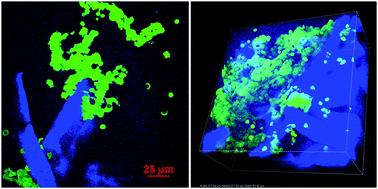A study of the transport and immobilisation mechanisms of human red blood cells in a paper-based blood typing device using confocal microscopy†
Abstract
Recent research on the use of bioactive paper for human blood typing has led to the discovery of a new method for identifying the haemagglutination of red blood cells (RBCs). When a blood sample is introduced onto paper treated with the grouping antibodies, RBCs undergo haemagglutination with the corresponding grouping antibodies, forming agglutinated cell aggregates in the paper. A subsequent washing of the paper with saline


 Please wait while we load your content...
Please wait while we load your content...